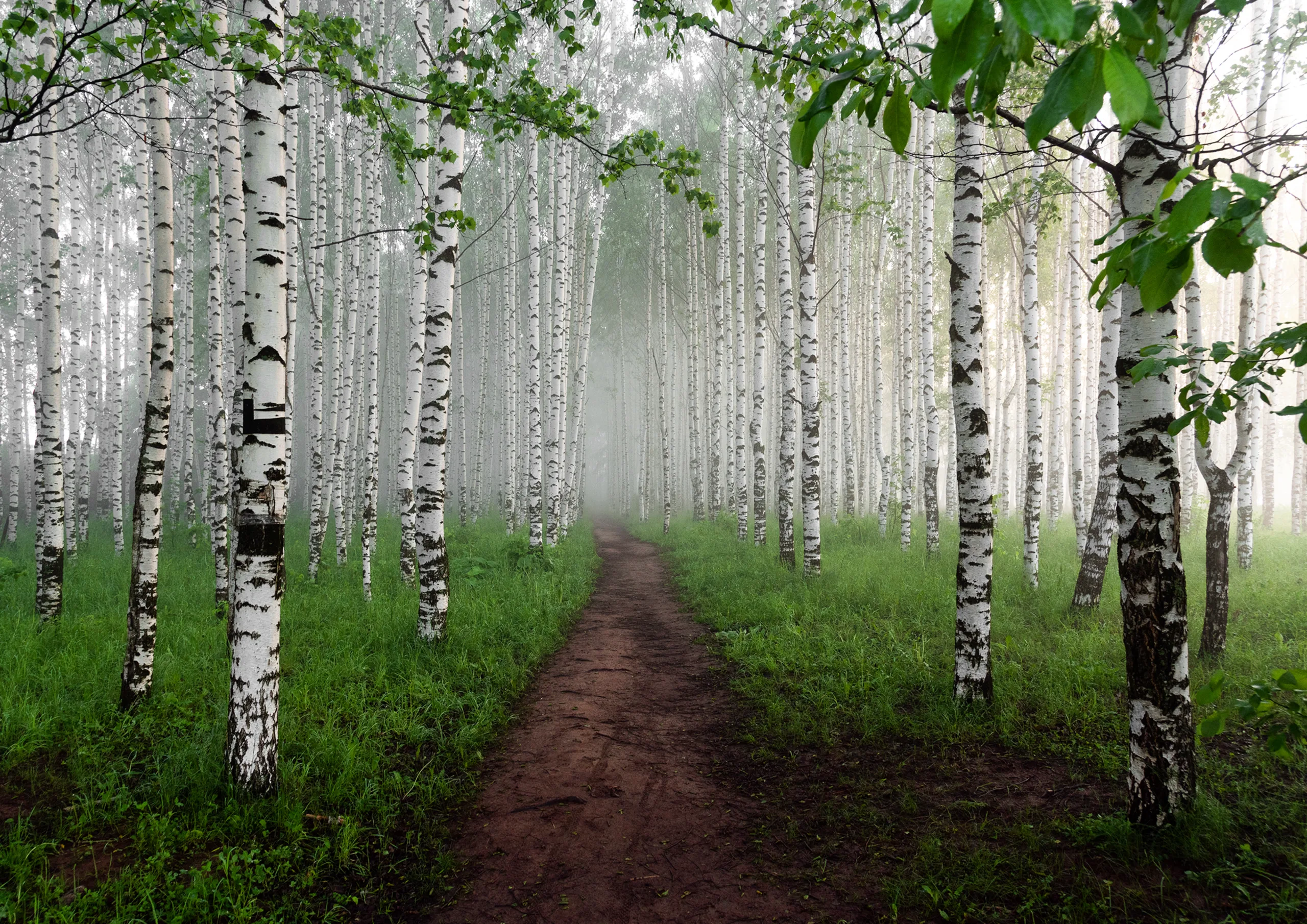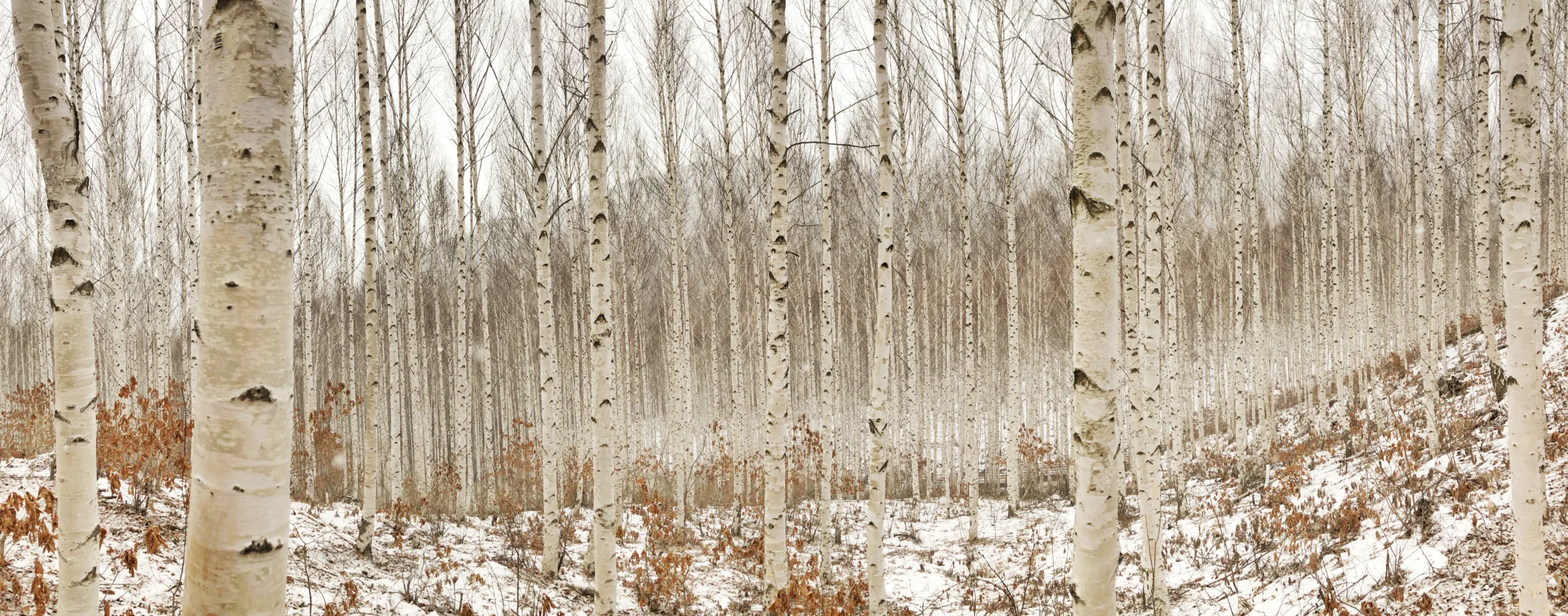Have you ever been walking in a forest and wondered what type of tree you were looking at? Aspen and birch trees can look strikingly similar, but there are several distinct differences that can help you tell them apart. In this article, we’ll explore how to tell the difference between aspen and birch trees. We’ll look at their bark, leaves, branches, and overall growth habits so that you can identify the different species with confidence. Whether you’re an amateur naturalist or a seasoned forester, understanding the subtle differences between aspen and birch trees is important for appreciating the unique beauty of each species.
In order to identify an aspen tree, look for certain characteristics such as its smooth, white bark, and triangular-shaped leaves with jagged edges. Aspens are also known for their “trembling” leaves, which flutter in the wind due to their flat petioles. Additionally, they produce a small cottony seed that hangs from the branches in the fall.
Characteristics of Aspen Trees
Aspen trees are a type of hardwood tree belonging to the Salicaceae family. They are known for their rapid growth rate and ability to adapt to different climates and soils. The most common species of Aspen tree is the Quaking Aspen, which is native to North America and Europe. Aspens are deciduous trees that can grow up to 30 meters in height and have a trunk diameter of up to 1 meter. They have a shallow root system, which allows them to quickly spread across vast areas, creating large groves or stands of trees.
Aspens have light-green leaves that turn yellow in fall before falling off the tree. These leaves are oval in shape with a pointed tip and serrated edges. The bark on an Aspen tree is smooth, thin, and grayish-white in color with small black spots that may appear raised from the surface. The wood from an Aspen tree is light but strong and often used for furniture, flooring, and other woodworking projects.
Aspens are drought-tolerant trees that can thrive in many different soil types including clay, sand, loam, and rock-based soils. They can also tolerate extreme temperatures ranging from -40 degrees Celsius in winter to 30 degrees Celsius in summer. Aspens prefer full sun exposure but can tolerate some shade as well. They also require minimal maintenance once they are established and can live up to 150 years with proper care.
In addition to their hardiness, Aspens also provide food for several wildlife species including deer, elk, moose, squirrels, birds, and rodents. Their fragrant leaves also act as an insect repellent that helps keep pests away from gardens or crops nearby. Aspens are also popular for their ornamental value since their vibrant colors make them stand out among other trees or shrubs in a landscape setting.
Distinguishing Features of Aspen Trees
Aspen trees are easily recognizable by their unique features. The leaves of Aspen trees are small, heart-shaped and have a quivering, shimmering appearance. The bark is smooth and white when the tree is young, eventually turning to a greyish color as it ages. In the fall, the leaves turn a golden yellow before they fall off. Aspen trees also have shallow roots that spread out over a large area, making them resistant to wind and drought. They can survive in cold climates and typically live up to 80 years. Aspen trees are popular landscape plants due to their hardiness and distinctive shape.
In addition to their aesthetic qualities, Aspen trees provide many other benefits. They are important sources of food for wildlife such as deer, elk, and moose. Their shallow roots prevent soil erosion and provide protection for other plants in the surrounding area. The wood of these trees is light and soft, making it ideal for carving or furniture making. Aspens can also be used for firewood or paper production.
Overall, Aspens are beautiful trees with many unique characteristics that make them stand out from other species. They provide numerous benefits to both people and wildlife alike, making them an ideal choice for landscaping projects or simply enjoying nature’s beauty.
Identifying Birch Trees
Birch trees are commonly found in many parts of the world, and can be identified by their white bark, slender branches, and heart-shaped leaves. Its bark is often used for crafts and woodworking projects due to its unique texture. To properly identify a birch tree, it is important to examine the tree’s bark, twigs, leaves, and overall shape.
Bark
Birch tree bark is one of the main characteristics used for identification. It has a white color with black horizontal lines running along it. The bark can also have a patchy or scaly appearance that can help to distinguish it from other types of trees. In addition, birch tree bark will also feel thin and papery when touched.
Twigs
The twigs of a birch tree are long and slender with buds at the end that are brown in color. The buds can sometimes have hairs on them which will help to differentiate them from other types of trees. Also, birch trees typically have small clusters of twigs near the branch tips which will help to identify them as well.
Leaves
The leaves of a birch tree are another distinguishing feature that can be used for identification. They have an oval or heart-shaped appearance with serrated edges along the sides. Also, the leaves will typically be dark green in color and have a glossy sheen on their surface when viewed from underneath them.
Overall Shape
Birch trees typically have an upright shape with branches that extend outwards from its center trunk to form an umbrella-like crown at its top. This crown is often quite dense with foliage which helps to give it its distinct silhouette against other trees in its surroundings.
Overall, these characteristics combined together can help you identify a birch tree quite easily when compared to other species of trees in your area. With practice and observation, you should be able to determine if a particular tree is indeed a birch or not with relative ease and accuracy!
Characteristics of Birch Trees
Birch trees are some of the most recognizable trees in the world, with their smooth, white bark and slender branches. They are also one of the hardiest trees, growing in a wide range of climates and soils. Birch trees come in many varieties, each with its own unique characteristics. Some of the most common characteristics of birch trees include their growth habits, leaves and bark.
Birch trees usually grow to be between 30 and 70 feet tall, with a trunk diameter between 8 and 24 inches. They prefer moist, acidic soils and full sun or partial shade for best growth. The leaves are generally heart-shaped or ovate with serrated edges. They range in color from dark green to yellowish-green depending on the variety.
The bark is perhaps one of the most distinctive characteristics of birch trees; it is smooth and paper-like with horizontal markings known as lenticels which allow air to reach the tree’s inner wood layers. The color ranges from white to grayish-brown depending on the species and age of the tree. It can be peeled off in thin layers which makes it popular for use in craft projects such as basket weaving or making cups or utensils out of it.
Birch trees can live up to 100 years but many only survive for about 50 years due to insect infestation or disease damage. In some cases, they can even survive being flooded for extended periods without dying off due to their shallow root systems that allow them to easily absorb oxygen from flooded soils. They are also popular for use as shade trees because they have a rounded shape that provides ample coverage when grown properly.

Distinguishing Features of Birch Trees
Birch trees are some of the most easily recognizable trees in the world. These trees have a range of distinguishing features that help to identify them from other species. The bark of birch trees is smooth and light in color, often having a whitish or silver hue. It is usually marked with horizontal lines or diamond shapes, giving it a unique look. The twigs of the birch tree are slender and long with reddish-brown buds at the tips. The leaves are dark green and oval-shaped with finely toothed edges and pointed tips. They are typically arranged in pairs on opposite sides of the stem, making them easy to spot in springtime when they first appear. The bark and twigs of birch trees also have a distinctive smell when crushed or broken off, which is often described as slightly sweet. Birch trees tend to grow in clusters, forming large stands that can be seen from far away. These stands create a unique landscape that makes them popular choices for landscaping projects around homes and businesses alike.
Similarities Between Aspen and Birch Trees
Aspen and birch trees are two of the most common trees in North America, and they have many similarities. Both aspen and birch trees are deciduous, meaning they shed their leaves in the fall. They both prefer growing in moist soils and can be found near streams and wet areas. The bark of both trees is smooth, white or silver-gray in color, but with age the bark of the aspen tree will become rougher and darker in color. The bark of a birch tree is usually thinner than that of an aspen tree.
Both species produce small flowers in the spring that are usually green or yellowish-green in color. Aspens produce both male and female flowers on the same tree while birches have only male flowers. The leaves of both trees have a similar shape: oval to triangular with a pointed tip, although aspens tend to be larger than birch leaves. In addition, both species’ leaves turn yellowish-gold or reddish during autumn before dropping off for the winter season.
Aspens and birches also share similar uses in forestry: they are often planted together to form windbreaks, provide cover for wildlife, or create habitat for birds. Additionally, these trees are commonly used for firewood due to their fast growth rate; they produce larger amounts of firewood than other species within a short amount of time.
Overall, aspens and birches are two very similar species that can be found throughout North America’s forests. Although there are some differences between them such as leaf size or bark texture, these two species share many similarities including their preference for moist soils, production of small flowers each springtime, use for windbreaks or firewood production, and their shedding of leaves each autumn season before winter arrives.
Mark Hoffman is a dedicated arborist and tree care specialist with over a decade of experience. His love for trees began when he visited Yosemite National Park as a teenager and was awestruck by the giant sequoias. Mark pursued his passion by studying forestry at Michigan Technological University, where he earned a Bachelor of Science degree.
Since then, he has worked tirelessly in the field of arboriculture, helping to preserve and protect trees in his community. His expertise and dedication have made him a respected leader in the industry and a valuable resource for anyone seeking advice on tree care.
